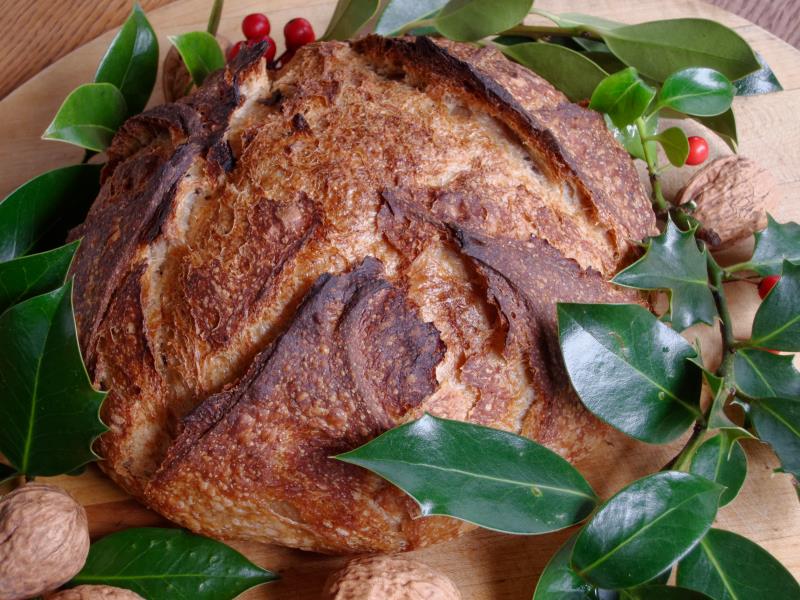
Bread went from being a major part of our ancestors’ diet to being a very small part of the food we eat today.
Heavy, rich, and nutritious bread was once a daily staple; today commercially bread is produced in fully-automated factories, is full of chemical additives, preservatives, too much salt, and has too little nutritive value. It is no longer our “staff of life.”
Early Wheat
Humanity has been making and eating bread – at first unleavened and then later leavened with a variety of yeasts – for thousands of years. It was about 10,000 years ago that man began to domesticate einkorn and emmer, the ancestors of modern bread wheat.
The earliest known ancestral wheat species grew naturally all over the eastern Mediterranean region. They were grains with a tight husk around each seed that had to be removed by parching or thrashing the grain. Modern bread wheat with “naked” grains or those that separate easily from the husk was an early cross that appeared around 9,000 years ago.
Today’s bread wheat has been one of the successes of selective breeding resulting in high grain yield, good quality, disease and insect resistance, and salt, heat, and drought tolerance.
The Staff of Life
Bread was truly the “staff of life” for both the peasant and the nobleman for centuries. In the Middle Ages, for example, a majority of the population – mostly peasants – ate 2 to 3 pounds of bread a day.
Peasants ate heavy dark breads and the wealthy preferred bread made from white flour. The whiteness of the flour and the bread made from it were a sign of high social status because they were scarce and labor-intensive to produce, and thus expensive.
As the quality and variety of foods improved and other sources of protein became available, the amount of bread consumed began to drop. By 1880, daily diets included only about 1 1/3 pounds of bread and, just a century later, in 1977, that amount dropped to a little over 6 ounces of bread a day. Today, even with government recommendations of 6 to 8 ounces of “grain equivalents” a day, most Americans are eating about half as much bread as they did just 40 years ago.
In a reversal, the connotation of status based on the color of the flour used to make bread changed drastically in the late 20th century, as whole grain bread was perceived as having superior nutritional value. White bread was considered something consumed only by people with little understanding of the value of good nutrition.
Modern Milling
To fully benefit from high-tech food processing, mass production, mass marketing, long shelf life, product uniformity, even coloration, and soft texture, the production of wheat and bread stripped out most of the grain’s nutritional value.
When wheat is milled into refined white flour more than 30 essential nutrients are removed. As a result, malnutrition became so prevalent in the first half of the 20th century that in the 1940s bread manufacturers began adding back some of the missing vitamins and minerals – referred to as “enhancement” – as part of a government-sponsored program to combat diseases such as Beriberi and Pellagra.
Where does the miller get the replacement vitamins and minerals that once arrived free with the wheat berry? He buys them from big pharmaceutical companies and mixes prescribed amounts into the freshly ground flour.
Industrial Bread Production
As early as the mid-19th century, bakers were attempting to speed up the production of bread because even the fastest traditional methods could take up to 24 hours to produce a finished loaf.
In 1856, the Aerated Bread Company, London, patented a production method that combined flour and water supersaturated with carbon dioxide under pressure. When thoroughly mixed, the spongy dough required no yeast and was immediately ready for the oven. The entire production process took less than 30 minutes to produce something that more resembled cake than bread.
By the early 1950s, American industrial bakeries were mass-producing yeasted bread and bakers discovered that the addition of certain chemicals and enzymes – bread “improvers” – to the dough could shorten the process to as little as two hours.
Bread improvers also boosted the amount of enzymes that develop the flavor and strengthen the gluten to give the bread a better structure and retain more of the gas produced by the yeast.
Back to the Future
By the early 70s, as the natural food movements and the second wave of food co-ops spread beyond the “back to the earth” idealists, consumers began to look for healthier and safer foods, including whole grain and naturally leavened bread.
In response to mass-produced soft, damp, nutritionally deficient, chemical-laced bread, a demand for artisan home-style breads began in the 1990s. And by 2005, even makers of refined white bread began to add brown coloring (caramel) and plant fiber or cellulose (wood fiber) to give the appearance of whole wheat, high-fiber bread.
In 2006, Wonder Bread was one of the first brands to introduce whole grain white bread made with an albino variety of wheat that doesn’t have the “harsh taste” of whole red wheat flour. What exactly are the ingredients used in “Whole Grain White” Wonder Bread? This long list of chemicals and additives is miles from nutritious bread made only from true whole grain flour, salt, yeast and water.
What exactly are the ingredients used in “Whole Grain White” Wonder Bread? This long list of chemicals and additives is miles from nutritious bread made only from true whole grain flour, salt, yeast and water.
Water, Unbleached Enriched Flour (wheat Flour, Malted Barley Flour, Niacin, Reduced Iron, Thiamin Mononitrate, Riboflavin, Folic Acid), Whole Wheat Flour, Wheat Gluten, High Fructose Corn Syrup, Yeast, Fiber (contains One Or More Of The Following: Soy, Oat, Cottonseed Or Cellulose), Brown Rice Flour, Contains 2% Or Less Of Each Of The Following: Soybean Oil, Calcium Sulfate, Honey, Salt, Dough Conditioners (contains One Or More Of The Following: Sodium Stearoyl Lactylate, Calcium Stearoyl Lactylate, Monoglycerides, Mono- And Diglycerides, Distilled Monoglycerides, Calcium Peroxide Calcium Iodate, Datem, Ethoxylated Mono- And Diglycerides, Enzymes, Ascorbic Acid), Calcium Carbonate, Soy Flour, Monocalcium Phosphate, Yeast Extract, Alpha Tocopheryl Acetate (vitamin E), Zinc Oxide, Soy Lecithin, Sugar, Iron (ferrous Sulfate), Niacin, Pyridoxine Hydrochloride, Pouc Acid, Thiamin Mononitrate, Cholecalciferol (vitamin D3), Cyanocobalamin (b12), Ammonium Sulfate, Monocalcium Phosphate, Calcium Propionate (to Retard Spoilage).
Unfortunately, now we are seeing even small “look-natural” bakeries making imitation artisan and sourdough bread by using prepared mixes containing most or all of the dough’s ingredients along with a variety of chemical additives.
Bread Made OF and IN Montana
Much like wine and cheese, the flavors of grain – and the breads made from them – can be unique to a region or even a micro-climate present on a group of farms. Heirloom or landrace wheats are traditional varieties adapted over the years to local environmental conditions and farming practices and, as a result, can have more pronounced flavors.
We grow a lot of wheat in Montana! The good news is that central and eastern Montana are perfect places to grow wheat; unfortunately 85 percent to 90 percent of that wheat is exported.
More and more, creative small growers are changing the face of wheat production. Farmers are experimenting with local land races and locally developed varieties. They are implementing organic farming practices and concentrating on soil health rather than high yields. As a result, unique high-quality grains and flours are available to both professionals and at-home bakers.
Buy local!
 Sunflower Bakery is a family-owned, artisan bakery specializing in naturally leavened breads and from-scratch baked goods using local and organic ingredients. Sunflower also serves soup, sandwiches, quiche, coffee and tea all day long.
Sunflower Bakery is a family-owned, artisan bakery specializing in naturally leavened breads and from-scratch baked goods using local and organic ingredients. Sunflower also serves soup, sandwiches, quiche, coffee and tea all day long.
The Bakery’s mission is:
- to provide the Helena community with wholesome, natural bread that is both delicious and healthy
- to find new ways of working with whole grains in our breads and pastries
- to support Montana’s food economy by sourcing locally and seasonally
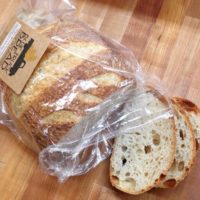

Blue Truck Bread is an “on farm” bakery producing naturally leavened breads made of farm grown heirloom grains milled on the farm and with flour from other Montana-grown grains.
Blue Truck Bread is available in the on-farm store and in Great Falls at the Farmers Market and select retailers.
On the Rise Bakery, Bozeman MT
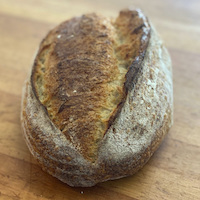
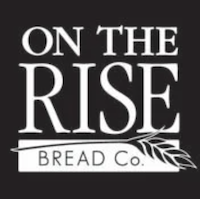
On the Rise Bakery has been creating artisan breads in Bozeman since1997.
All of the bread from On the Rise is naturally leavened with a desem starter. Desem is essentially a 100% whole grain pain au levain, done in the old French way for those who do not prefer their bread sour.
Montana-grown grain and flours stone ground in-house are used for On the Rise naturally leavened loaves.
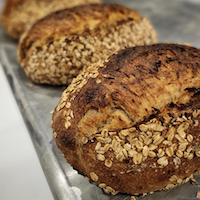
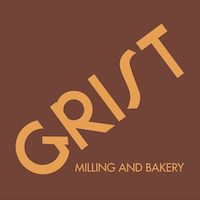 Grist Milling and Baking, Missoula MT
Grist Milling and Baking, Missoula MT
Grist Milling and Baking is a wholesale bakery and small mill located in Missoula, Montana. Grist specializes in naturally leavened sourdough bread that uses 100% organic Montana grain. They also make a fine selection of pastry.
The grain is milled into flour at the bakery with a Vermont quarried granite stone mill. Whole-grain, fresh-milled flours are healthier, easier to digest, and longer-lasting.
Resources:
Domestication of Plants in the Old World, Daniel Zohary and Maria Hopf, Oxford University Press, 2002
A History of Food, Maguelonne Toussaint-Samat, Wiley-Blackwell, 2009
Specialty Grains for Food and Feed, edited by Elsayed Abdel-Aal and Peter Wood, American Association of Cereal Chemists, Inc., 2005
Common Wheat, Wikipedia
The Wheat Farmer’s Bread and the Baker’s Crop
Wheat Researcher Surprised By Taste Test
Wheaty Indiscretions: What Happens to Wheat From Seed to Storage


